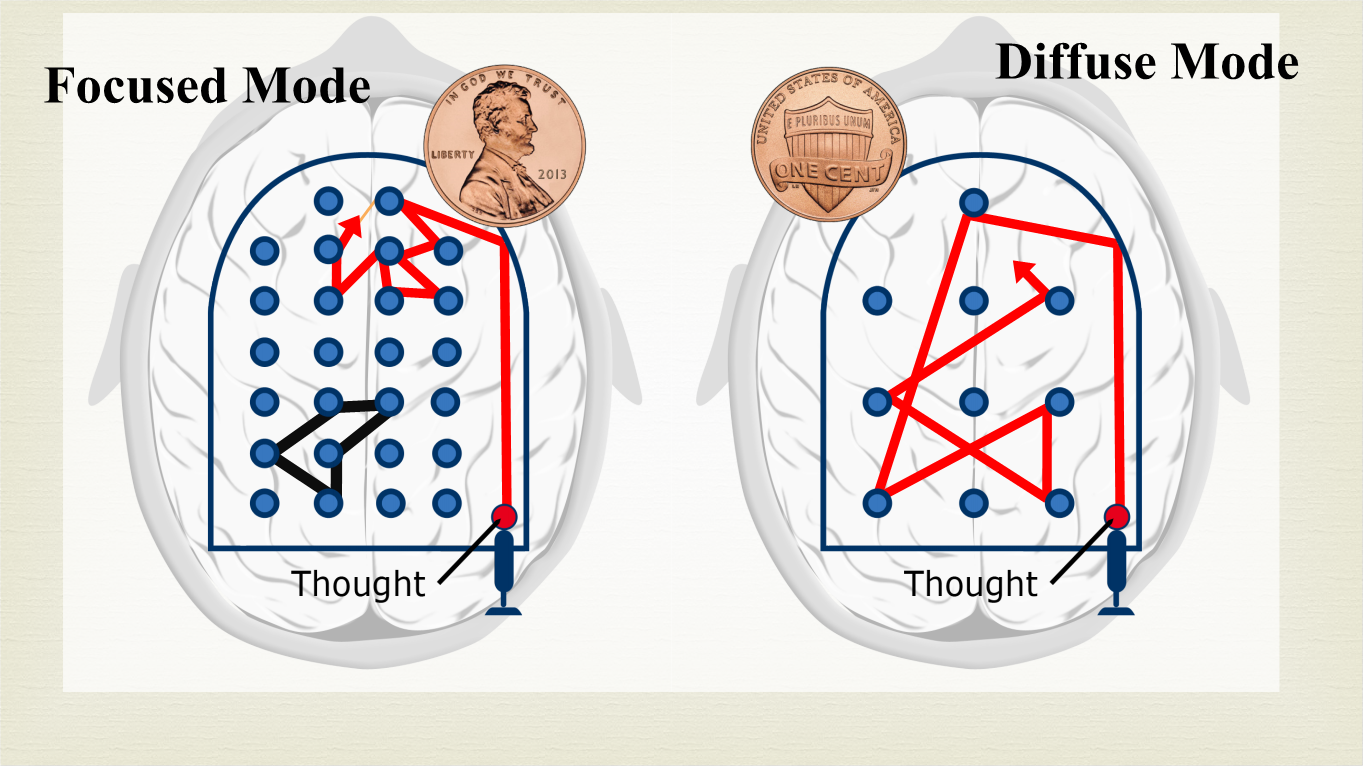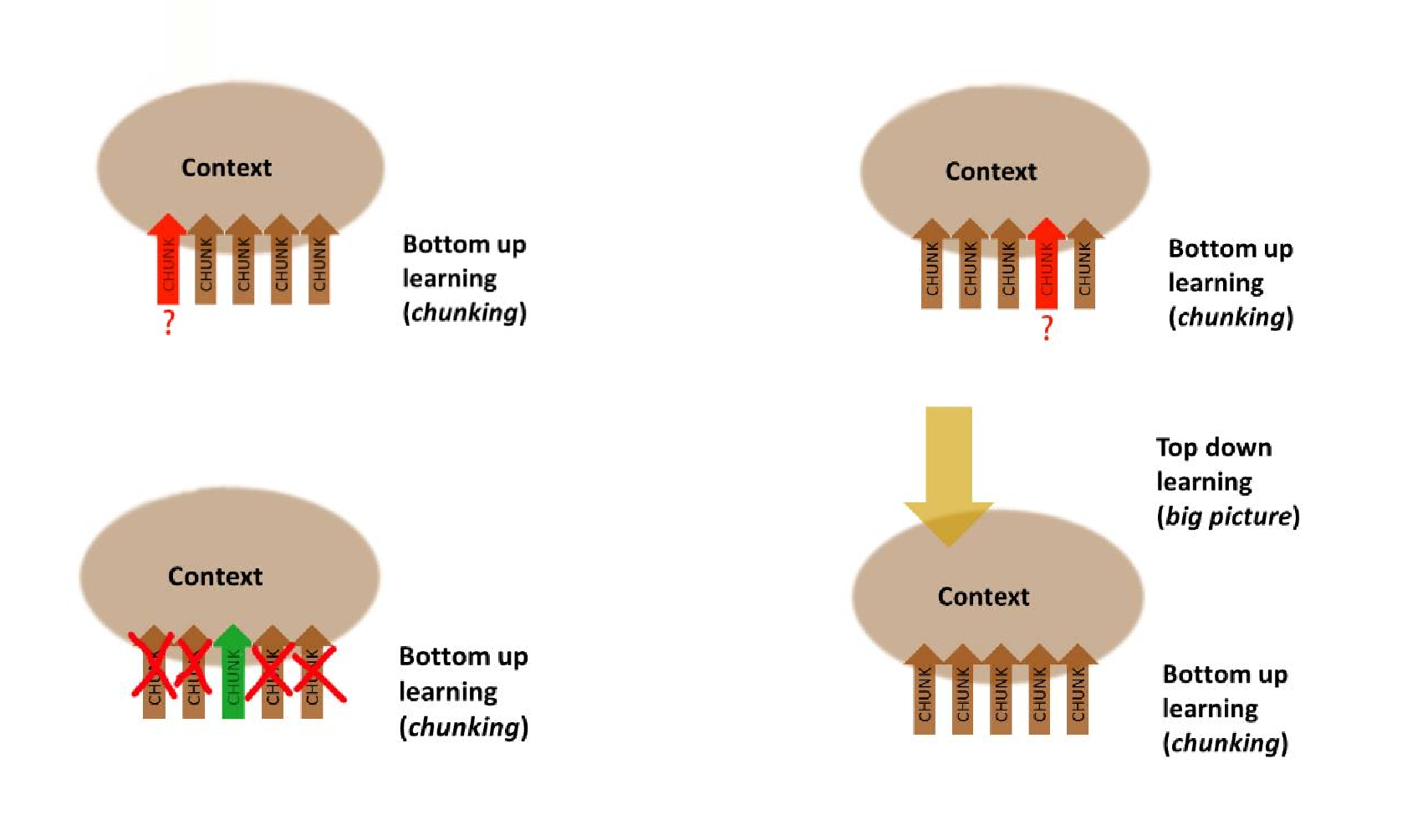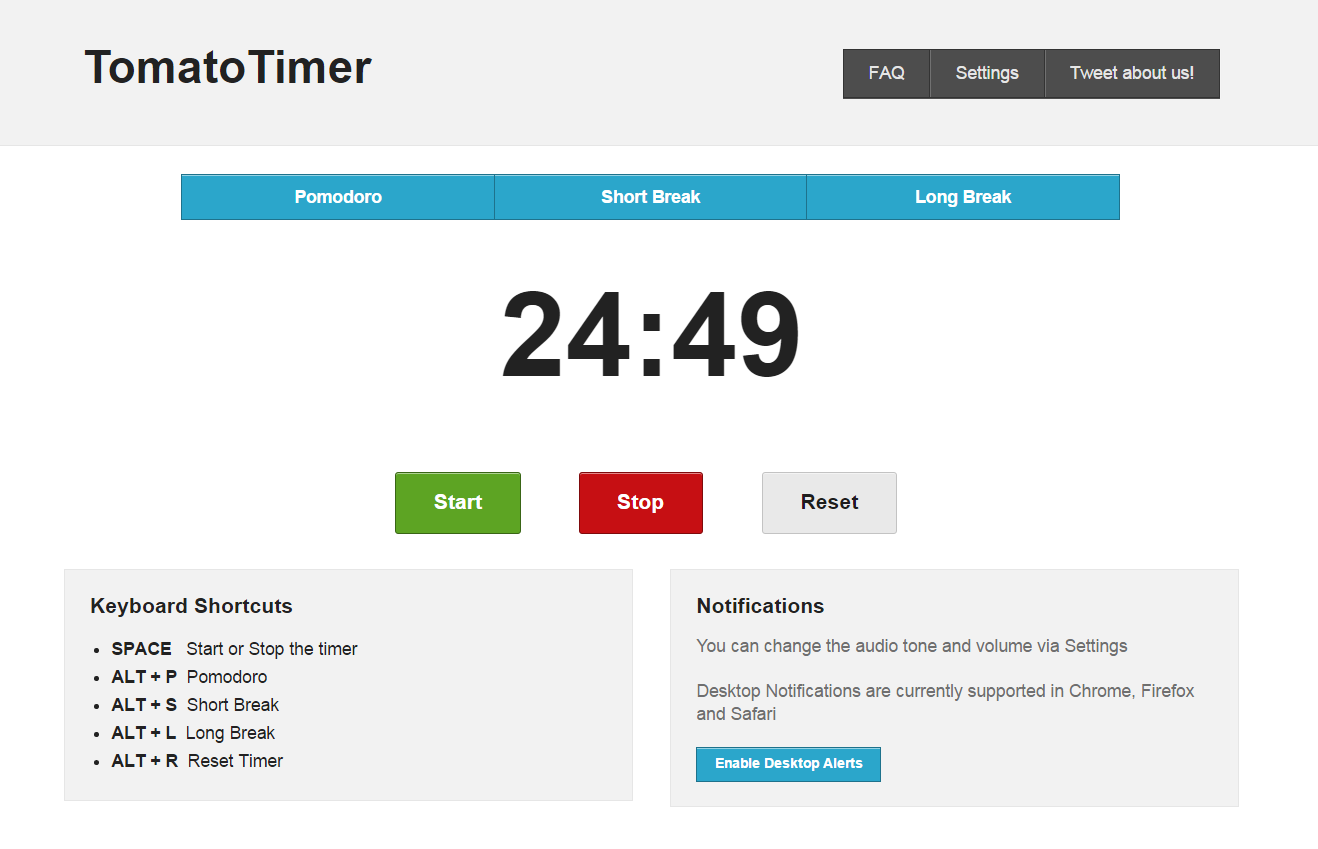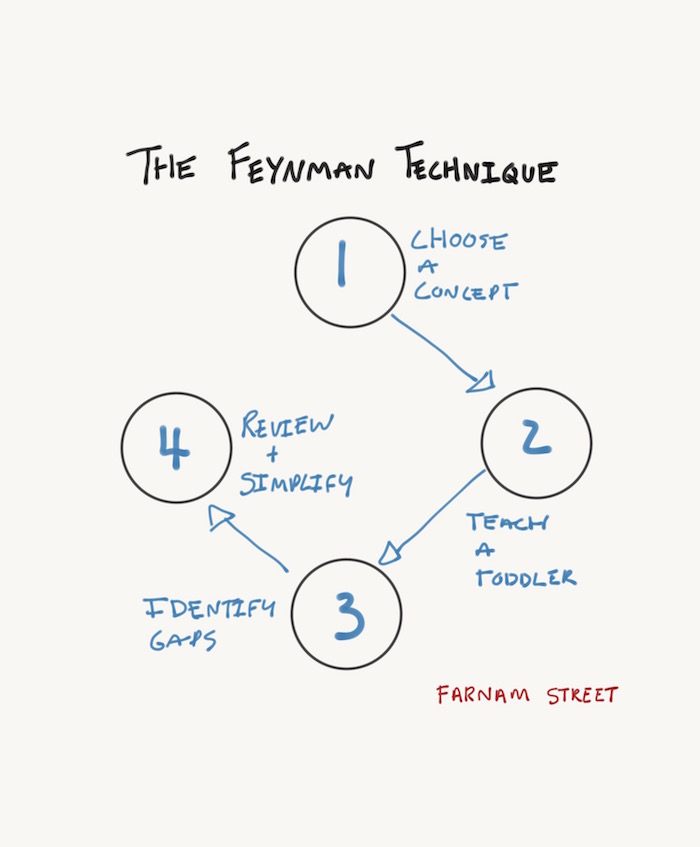Thinking Modes
Focused vs diffused mode (both are neccesary, take scheduled breaks)

Chunking
know how smaller concepts fits in the bigger concept, like puzzle pieces

Formation of Chunks

Practice and Repetition
- write down
- picture
- sleep
Pomodoro

Illusions of Competence
brief notes that summarize keys concepts are much more effective

Recall
after reading summarize in a few minutes your takeaway


Bite-Sized Testing
auto-test yourself about new material
Overlearning
avoid marathon sessions, spread learning over many sessions in different learning modes
Interleaving
know how but also know when to apply a concept, context is important
Methapors and Analogies
use them when teaching/sharing what you’ve learned
Study Groups
share and get different points of view, learning in groups adds to the experience
Procrastination
Process over Product
aim for time goals
Zombie Mode
4 Elements of Habit
神经科学认为 Chunking 与习惯是相关的。良好的 Chunking 使你在完成一项任务时只需要关注个别关键的因素,将剩余的交给僵尸模式,从而节省精力。显然习惯并不完全是有害的,但为了克服拖延这个坏习惯,你需要了解习惯的四个要素。
- Cue:触发僵尸模式的外界刺激,比如 to-do list 上的第一个项目,或是来自朋友的微信消息。这类刺激大致可以分为四类:时间、地点、感受和反应。
- Routine:受到刺激后习惯性地做出的反应。
- Reward:习惯给予的奖励使它得以存在下去,最简单的例子就是你在拖延时感受到的短时间的愉悦。
- Belief:习惯的力量之所以强大,是因为你在内心深处往往认为它们是无法被改变的。
Harnessing Zombies
拖延很容易,而对抗拖延需要消耗大量的意志力(Will Power)。所以尽量使自己处于不需要对抗拖延的境地,或是反过来用尽量少的意志力来利用僵尸模式帮助自己。
根据上面对习惯的分析,要打破拖延的习惯链,只需消耗意志力去改变四个要素中的一个。
- Cue:找到令自己进入拖延的刺激并避免它们。最简单的例子,在学习时远离网络和电视。
- Routine:有意识地改变日常的一部分,比如定新的计划,或是养成在学习前把手机关闭的习惯。
- Reward:尝试引导自己的正面进取情绪来替代拖延带来的快感,比如自豪感、满足感等。又或者允许自己在不拖延完成任务后尽情放松。一个小技巧是将奖励设定为跟 deadline 有关,比如“五点前做完作业就约上同学去吃大餐”。
- Belief:相信自己的新策略可以成功打败拖延。可以通过跟志同道合的小伙伴互相监督来促进自信。